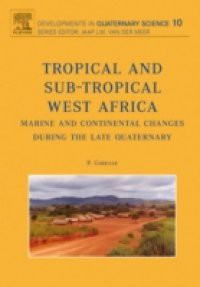West Africa and the eastern Atlantic stretching from Mauritania in the north to Namibia in the south offer a large latitudinal stretch incorporating nearly symmetrical climatic gradients from the Equator. On the time scale of Quaternary Glacial and Interglacial cycles, today, we possess well-documented and recently published marine sedimentary records showing changes in oceanic and atmospheric circulations and terrestrial fluxes. Deep-sea sediment records contain a wide range of palaeoenvironmental indicators like oxygen and carbon isotopes, alkenones, foraminiferal and other planktonic assemblages over time periods up to and greater than 125,000 years. These are signals of temperature and circulation shifts and allow Interglacial and Glacial comparisons on a regional and inter-hemispheric scale. However, this effort to synthesize the existing knowledge cannot yet aspire to a global modelling. Linking with terrestrial records, albeit spatially patchy and generally lacking a firm chronology, this book points to shorter time scale chronologies from lakes, marshes and river deposits. Diverse and not very wellknown literature, both French and English, is reported here. Lastly, the book records recent knowledge of the first steps of human occupation of frequently hostile environments and considers the environmental impact of ancient and modern societies.* Covers the recent studies about marine Quaternary environments off West Africa, as well as continental Quaternary environments of tropical and sub-tropical West Africa (over 10,000 to 100,000 years)* Compares the parallel between palae-oenvironmental trends according to latitudinal gradients




















